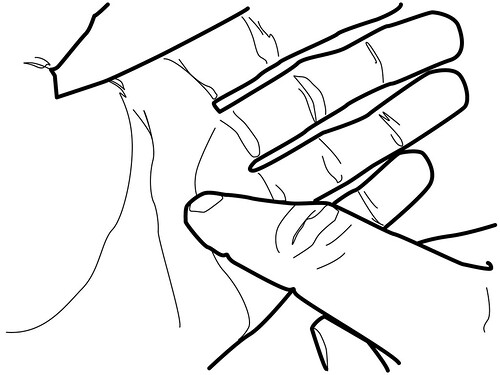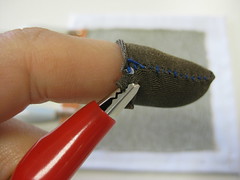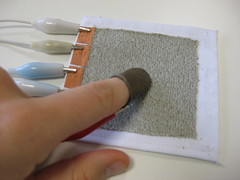Everywhere I can touch myself (2009)
2008
Exploring the relationships between body parts in terms of touch.
Various methods for documenting this project are considered, and include animation, two- and three-dimensional abstraction as well as real time sensing using wearable technology. The aim of the wearable piece is to be able to record where, at any specific moment, a designated body part is touching the rest of the body. The various designated body parts constitute the chapters of this project, such as “Left Elbow”, “Right Heel”, “Nose”…

Chapter 1: Hands and Fingers
A first prototype to explore possible wearable technology solutions, is the set of a glove and a fingercap, where the glove can sense where the fingercap is touching it. I would like to explore interaction possibilities by replacing a standard laptop touchpad with this prototype and thinking about where the curser might go, as the navigating finger makes its way across the surface of the other hand. I’m interested in what interactions can take place on the surface of the human body, between body part and body part. Prototypes, possibilities and the meaning behind this proejct are being explored simultaneously.
Prototyping
The technology behind the first prototypes is based laregely on the Knit Touchpad DIY.



Thanks
To Adrian Freed and CNMAT for materials, access to their database and the invitation to their sensor workshop.
And to the Distance Lab for supporting the work in progress of the first prototypes.